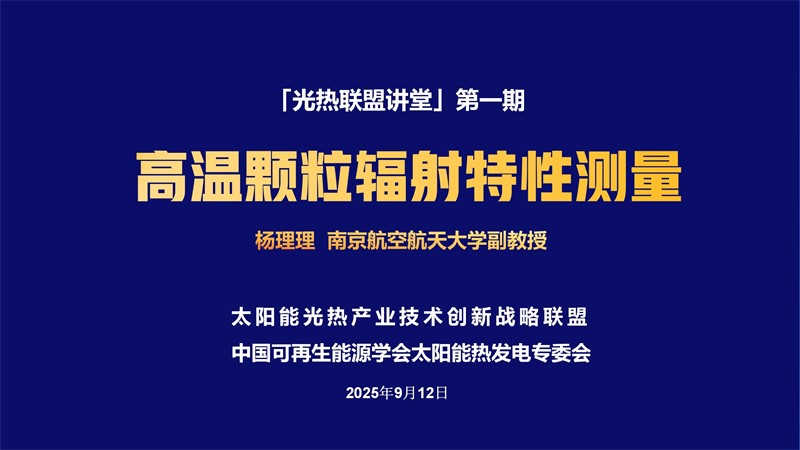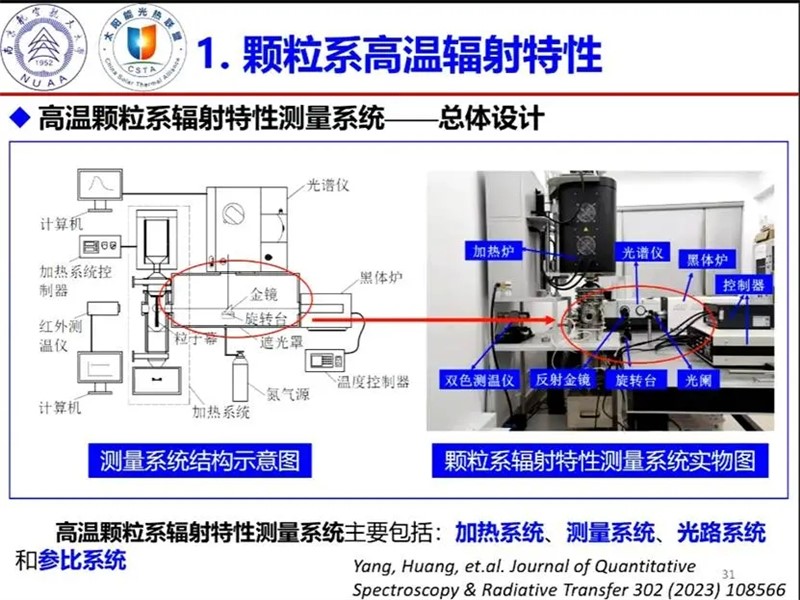On September 12, the online "CSTA Lecture Hall"—co-hosted by the CSTA and the Solar Thermal Power Committee of Chinese Renewable Energy Society—was officially launched. Dr. Yang Lili, associate professor at Nanjing University of Aeronautics and Astronautics, was invited to deliver the first lecture titled "Measurement of Radiation Characteristics of High-Temperature Particles."

Dr. Yang Lili stated that solar thermal technology is a vital branch of renewable energy utilization. The radiation characteristics of high-temperature particles serve as a bridge between solar energy and thermal energy and represent a core foundational issue in energy transmission and conversion within solar thermal power systems. Breakthroughs in measurement techniques for these characteristics are of great significance for promoting the efficient development of the solar thermal industry. In CSP, particles act as heat-absorbing media that directly absorb concentrated solar energy and convert it into thermal energy. They also function as thermal storage media, storing heat, and as heat-transfer fluids, flowing within the system to deliver heat to the power generation unit. Therefore, measuring the radiation characteristics of particles is crucial. Dr. Yang provided a systematic analysis of measurement methods and instruments for radiation characteristics, as well as recent research progress in the measurement of high-temperature particle radiation characteristics.

Ms. Du Fengli, Secretary-General of the CSTA and the Solar Thermal Power Committee of Chinese Renewable Energy Society, noted that the "CSTA Lecture Hall" is open to council members of the CSTA and individual members of the Solar Thermal Power Committee. It aims to expand services, build an academic and technical exchange platform among members, and foster collaboration.
The second episode of the "CSTA Lecture Hall" will invite Professor Lu Xi from Tsinghua University to deliver a report on the constraints of mineral resources in the development of renewable energy. Stay tuned.


